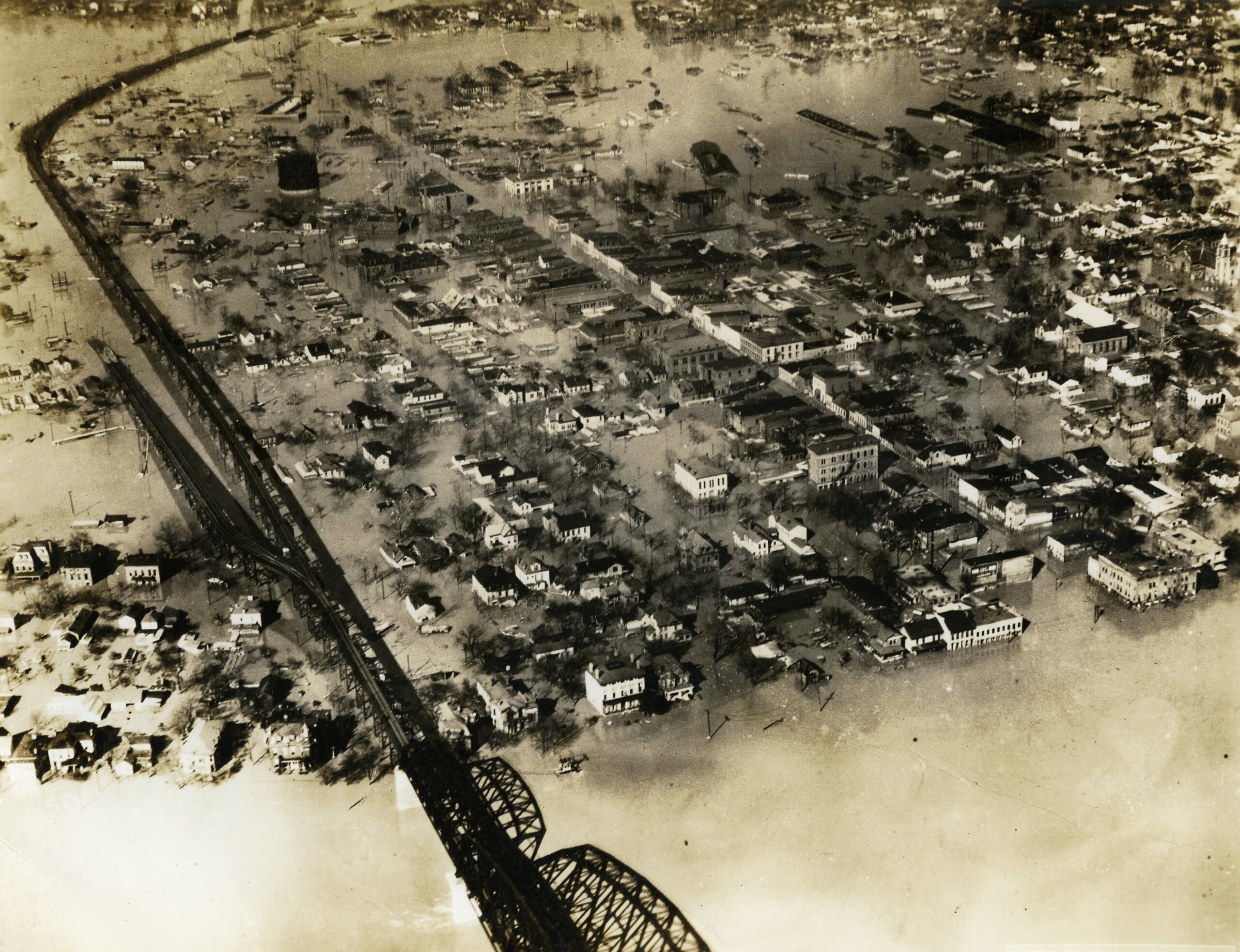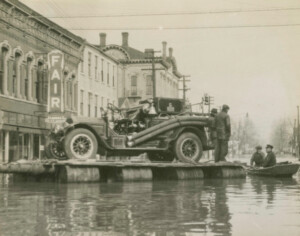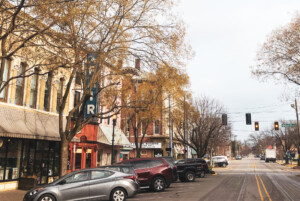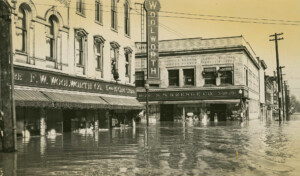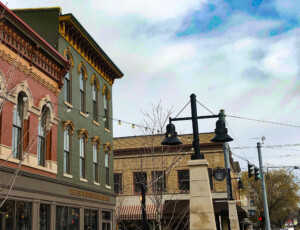This year marks the 85th anniversary of the 1937 Flood, which wreaked havoc on the lives of thousands from January to February of that year. According to accounts, it down poured for 24 days straight starting on January 5th, and the waters crested the flood stage around January 24th. The waters did not completely subside until around February 5th. The National Weather Service reported that the water covered 70% of Louisville, and 90% of Jeffersonville!
The flood reached from Pittsburg to Illinois and devastated our region. A total of 3,345 homes and 13,504 people in New Albany alone were affected directly by the flood, which caused billions of dollars worth of damage by today’s standards. While these numbers are shocking, it can sometimes be difficult to truly imagine the experience of those who lived through the flood, but primary sources give us a glimpse into this and other historical events.
What is a primary source? A primary source is a first-hand account of an event, meaning a source is describing something that they experienced personally. This description can be in the form of a journal, letter, poetry, artwork, interview, performance, or autobiography. A primary source is different from a secondary source, which is at least one step removed from the original account. Secondary are materials like books with quotes, articles, biographies, reviews, or essays.
How can we use primary sources to understand the experience of the 1937 Flood and other events? Primary sources do more than just state factual information about an event, they offer historical context and add dimensions to historical events by providing insight into people’s personal reactions, feelings, and experiences.
What images do these primary sources create in your mind?
January 26, 1937
This afternoon we all walked across the K. & I. Bridge. The sound of the rushing water was equal to Niagara Falls. Houses and all sorts of objects including, I am told, a live horse, are floating down. You cannot get get off the bridge at the Louisville end except by boat.
-Marion Groh, 1937 Flood Journal
May 28th, 1987
There were a great number of older residents in the area with two-story houses and they would move upstairs. I saw the national guard take a boat paddle, break out the windows, and lift elderly ladies into the boat because the water had reached their second floor.
-Gladys Sturgeon, 1937 Flood Oral History
July 21st, 1988
When I first moved to New Albany in 1937, I really came for a visit with no intention of staying. And I got involved with my father [pastor of the Second Baptist Church at Third and Main] who was helping refugees to move. Most of this move was done by boat, and people took with them the bare necessities. And the church down at third and Main the lower floor was flooded, it had water in it. But the sanctuary upstairs, the furniture, the pews, all of that as moved to the third floor. And it was petitioned off with curtains, or sheets mostly. So that the families could be separated and have a little privacy.
-Ruth Bledsoe, Oral History Interview
Were the images of a rushing river carrying away a live horse, elderly women being hoisted from their homes into a boat, and families living on top of each other sanctuary vivid? Primary sources help us to contextualize events by connecting others’ lived experiences to our own.
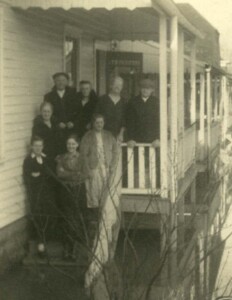
The Groh Family During the 1937 Flood Back Row: Edward Groh, Grace Groh, Ada Groh, Louis Groh Center Row: Emma Groh and Eva Groh Front Row: Marion Groh, Julia Groh Murr
The Indiana Room has a large number of materials relating to the 1937 Flood and includes primary sources. Two primary sources above are even available through the library’s digital collection on Archives.org! Visit the links below to read and listen to the rest of the first-hand accounts quoted above.
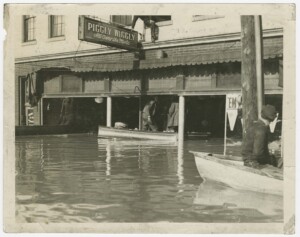
Piggly Wiggly store during New Albany, Ind. flood, 1937. Mentioned by Glayds Sturgeon in her interview.
Whether it is researching a massive event like the 1937 Flood or tyring to understand how your grandparents lived, primary sources can offer so much to a story. If you’re interested in your own family or local history, consider creating a journal, or recording a story of yourself or your elders. One day that will be a treasure!
If you have any questions or would like to know more about the collection, feel free to stop by or contact the Indiana Room anytime!
Sources:
The National Weather Service. “The Great Flood of 1937.” https://www.weather.gov/lmk/flood_37
Sturgeon, Gladys (1987). “1937 Flood Oral History.” https://archive.org/details/gladys-sturgeon-oral-history
Groh, Marion (1937). 1937 Flood Journal. https://archive.org/details/1937FloodDiary/mode/2up
Bledsoue, Ruth (1988). “Oral History Interview.” https://archive.org/details/ruth-bledsoe
Images from the Indiana Room Historic Photograph Collection and Indiana Room Instagram.

